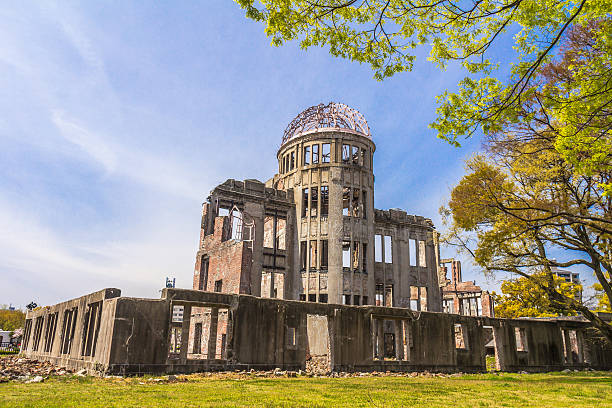
Preface Annually observed on August 9th, Nagasaki Day holds a solemn significance in global history. It marks the day when the Japanese megacity of Nagasaki was devastated by an infinitesimal lemon during World War II. This day serves as a poignant memorial of the immense destructive power of nuclear munitions and the critical imperative for enduring peace. The Bombing of Nagasaki an Insight into History World War II Background Amidst the tumult of World War II, the United States and its abettors sought to conclude the conflict with Japan. The decision to employ infinitesimal losers was driven by the end to expedite Japan’s rendition and avoid an extended, expensive irruption. The First Atomic Bomb Hiroshima, another Japanese megacity, was the original target of an infinitesimal lemon on August 6, 1945. The lemon’s profound desolation touched off worldwide shock and horror, leading to calls for Japan’s cession.

The Decisive Day on August 9, 1945, an alternate infinitesimal lemon, codenamed” Fat Man,” was stationed over Nagasaki. The lemon exploded above the megacity, performing in wide desolation and substantial loss of life. desolation and Aftermath Immediate Impact The explosion cancelled substantial sections of Nagasaki, incontinently claiming knockouts of thousands of lives. The lemon’s violent heat and radiation foisted severe becks. and injuries upon survivors.
Long- Term Ramifications Survivors of the Nagasaki bombing, known as” hibakusha,” brazened enduring health challenges stemming from radiation exposure, including cancers, birth anomalies, and other afflictions. The megacity itself sustained expansive damage, pouring profitable and societal rigors. Global response and Calls for Peace Global outrage The bombings of both Hiroshima and Nagasaki inspired global outrage and burned debates about the ethical counteraccusations of planting similar ruinous artillery. numerous questioned the morality of targeting mercenary populations and the far- reaching ecological and mortal impacts.

Path to Peace The horrors witnessed in Nagasaki and Hiroshima played a vital part in shaping the post-war global order. trials to forestall farther nuclear disasters crowned in the establishment of realities like the United Nations and enterprise devoted to demilitarization and non-proliferation. Remembrance and Assignments for the unborn recognizing the Victims Nagasaki Day stands as a solemn homage to the lives lost and the suffering endured by the Nagasaki crowd. keepsake observances, peace rallies, and cultural expressions pay homage to the tenacity and adaptability of the survivors. championing for Peace Against the background of global pressures and the ever-present imminence of nuclear conflict, Nagasaki Day underscores the pre-eminence of politic judgments, dialogue, and demilitarization. It urges nations to prioritize collaboration, appreciation, and the pursuit of a world disenthralled from the brewing trouble of nuclear warfare. Conclusion Nagasaki Day remains a suggestive testament to the disastrous reverberations of nuclear ordnance and the critical necessity to forestall its use in times to come. As the world commemorates the rueful events of August 9, 1945, it serves as a time to reaffirm the hunt for peace, concinnity, and the safekeeping of mortal actuality. Through assimilating assignments from history and backing a earth devoid of nuclear munitions, we pay homage to the memory of the victims and endeavour towards a unborn illuminated by safety and stopgap for all.










